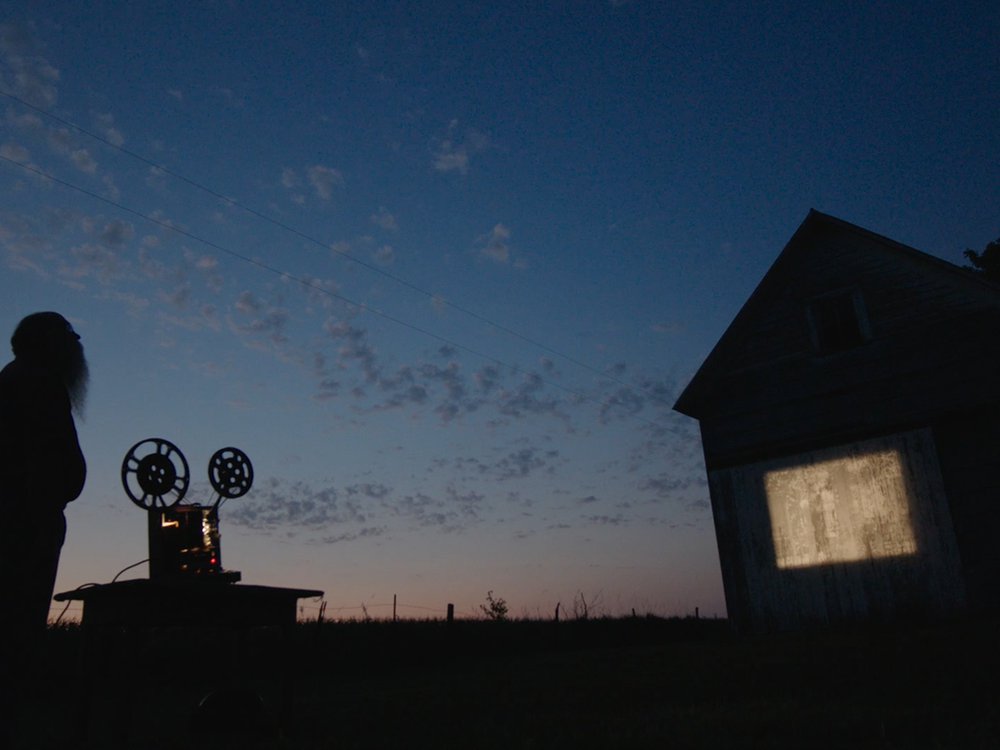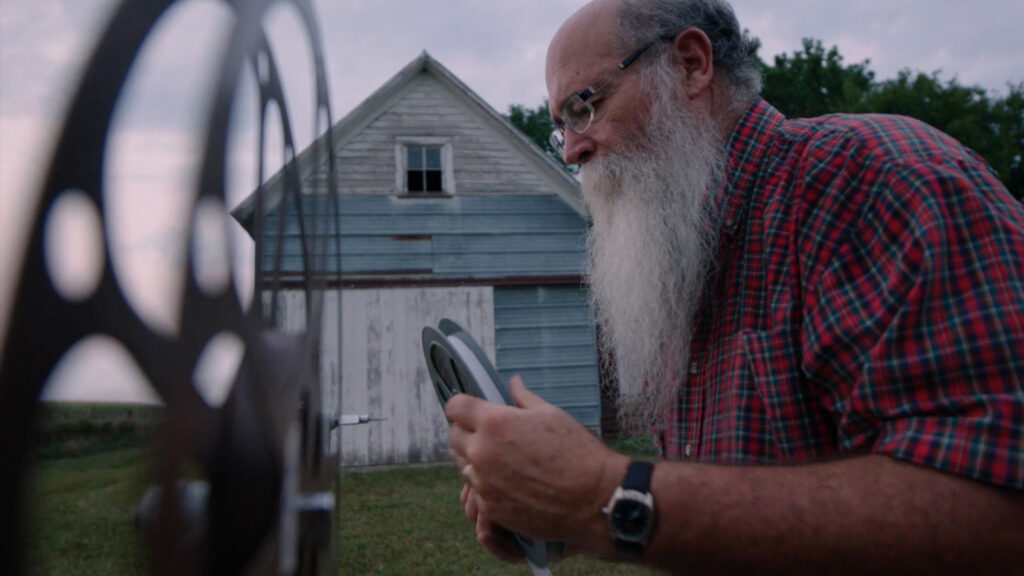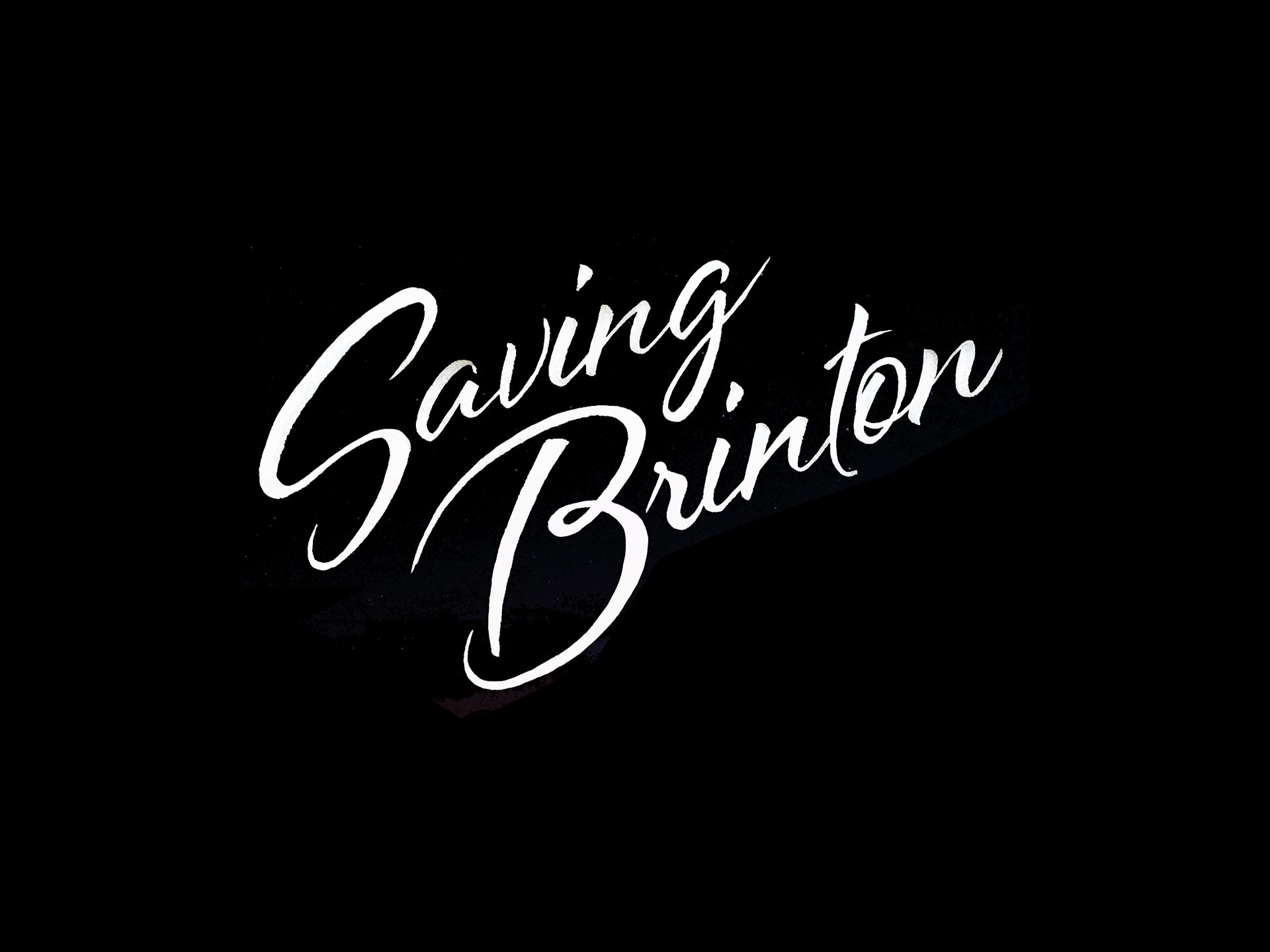
Documentaries about cinema are today so numerous that they are close to a genre in their own right and, with a very definite cinema-centric subject matter Saving Brinton puts itself firmly into that canon.
Co-directed by Iowa based film-makers Tommy Haines and Andrew Sherburne along with fellow local resident, cinematographer John Richard, the film is an all American folk tale which spiritedly brings to life an area of the American Mid-West which the film-makers admit is often casually dismissed as ‘Flyover Country.’
From the outset there is an air of familiarity to Saving Brinton; a small town USA location replete with picket fences, weather-board houses, agricultural equipment, and Amish horse and carts all consort to establish a sense of idyllic bucolicism. It’s a mis-en-scene recognisable from so many films, both verité and narrative feature, the normality/banality of which in many cases provides counterpoint for shocking/terrifying discoveries later to come. Indeed, the opening few minutes serve us tropes that do their best to convince us that we might know where the film is going, that it may possibly become one of those maudlin type documentaries – an immediate introduction to a quirky character shuffling around a dusty residence crammed with piles of boxes and overborne shelving merging to opening titles of bleak wintery scenes accompanied by a melancholic soundtrack. Happily the film transgresses these clichés to become something else entirely.

The film’s subject is what is known as The Brinton Collection, a personal archive from the life and career of one William Franklin Brinton of Washington, Iowa, an energetic eccentric who, with his wife Indiana, travelled a progressive multi-media roadshow across the mid-West staging film and slide projections and various other entertainments during the years 1895-1909. He also found time to serve as manager of the Graham Opera House in Washington (now the Iowa State Theatre), a movie theater recently declared the World’s longest running picture house. Accordingly the collection includes 16mm reels from the early pioneers of cinema; eminent names such as Lumière, Edison, Lubin, Pathé, Méliés are present alongside numerous magic lantern slides and an array of accounting ledgers, marketing posters, ticket stubs, and other business documents. Taken as a whole the archive demonstrate Brinton as being, in today’s terms, an early adopter who saw the value of movies as a business where others just saw modish entertainment, a vision that the filmmakers purport as showing the geographical area as being less the cultural black hole that it is so regularly considered, and more a locality where the groundwork for today’s global film industry was laid.
Whilst a fascinating topic for cineastes and a general audience alike, the collection is really a Macguffin
Whilst a fascinating topic for cineastes and a general audience alike, the collection is really a Macguffin. The film’s heart is retired schoolteacher and sometime cemetery caretaker Michael Zahs, the man to whom we were earlier introduced, replete with slightly worn clothing and a beard we might expect to see in a Grant Wood painting. As he says himself in a small moment of formal reflexivity: “…it’s gonna look like I’m one of those obsessive people or something.” With that identification of the contemporary reality film convention, which invites the audience to keep watching a character until they do something strange or an unsavoury revelation, Zahs emerges from evaluation as a possible outcast to become the hero of the tale: a man who, we will find out, possesses an immense affection for the past and has uncovered something that may have significant international and cultural importance.
Crucial backstory is delivered via the first person as Zahs relays how he acquired the Brinton Collection in 1981 as part of a job lot. We learn that, around the time of World War I, Brinton closed and put his films in the basement, where they sat untouched for decades after his death in 1919. They later made their way to the home of his widow’s executor, whereupon they came to Zahs’ attention after the owner emptied the house contents ready for the landfill.
Zahs could simply not let such a motherlode of history be thrown away and so purchased many of the belongings before spending 30 years of trying to get interest in what the unknowing previous owner had generously labeled as “Brinton Crap.” Largely failing due to public disinterest (as illustrated by Zahs’ recollection of a notable occasion when the office of Martin Scorsese rang but then never rang back), Zahs gifted the entire collection to the University of Iowa Libraries, Special Collections in 2014 where it has been catalogued, preserved, and made available for scholarly research.

The film then proceeds to follow Zahs experiences as he turns the Brinton Collection over to its new home and intersperses the events with moments of personal reflection, intimate family moments, a school reunion, and several of the many presentations that Zahs makes to local schools and community groups. Some of these are based on the Brinton archive itself and are shown to feature screenings and demonstrations of vintage equipment; others are about various historical topics illustrated with articles from his personal collection, an accumulation that we see goes way beyond cinema to encompass everything from agricultural implements, medicinal false limbs, to an old church tower.
There are a number of enjoyable occasions where his association with Brinton brings Zahs small-scale story onto a world stage. Notably the Collection is found to possess a long-lost Méliès film, as quantified by a visibly astonished Serge Bromberg, head of Lobster Films and noted film preservationist, for whom finding a new Méliès (most of course being destroyed by Melies himself) is a “miracle.” Consequently Zahs is invited to introduce a screening of the said footage in Bologna. Seemingly unphased by the change from small local audience to large international film festival crowd, he poignantly introduces the silent picture to the crowd, informing them, “You will be the first audience in 105 years to see this film.”
As it relays these events, Saving Brinton acquits itself as a quietly effective although, it must be said, a largely unremarkable documentary in the classic observational mode. Stylistically and structurally, it’s a serviceable work that does establish something of a narrative of how the Brinton Collection has been saved but it relies on the expositional diatribes of a single character with whom we can empathise and, more importantly, can allow ourselves to be drawn into the story via personal passion, eloquence, and real gift for light humour, to elevate itself above its apparent editorial and technical capabilities.
The film clearly seems to put forward a manifesto on the importance of laying a foundation for the future by acknowledgement of that which proceeds it

The film clearly seems to put forward a manifesto on the importance of laying a foundation for the future by acknowledgement of that which proceeds it, drawing as it does a clear parallel between the history of Brinton himself, a man who we discover channeled the adventurous spirit of his father before him into his barnstorming promotion of new technology, and Zahs’ own brand of forward-thinking via close and emotionally engaged study of the past.
The filmmakers also attempt to make a contrast between the Brinton Collection as a historical resource of great magnitude and it’s standing as a totem for something more important and of a resolutely smaller scale, ones local community. There are moments of excellence when the film reanimates the Brinton archive by overlaying Zahs enthusiastic narration across reference footage of artefacts or juxtaposing them against sections of the archive films themselves. Similarly, the landscape cinematography has moments that are simply stunning, and Zahs’ language is on many occasions equally poetic, really enough for one documentary. But the film sees fit to try and extend its reach further, exemplified by a sequence where we meet Zahs mother or similar encounters with local denizens. Whilst admirable in intention, this human interest detail adds nothing essential to the story. It’s combined effect seems uncomfortably at pains to demonstrate the prosaic nature of the location to then show us the exceptional story that came out of it.
This is a directorial choice that has the peculiar consequence of undermining the film’s own relevance. Whilst watching, one can’t avoid the feeling that Saving Brinton might have had a purer message if it had kept focus purely on the film history angle. Other films about films have stayed firmly as musings on the nature of the medium as a perfect crossover between technology, business, and expressive art form. There are many examples, but to choose one, Tim’s Vermeer is a film constructed in a similar vein around an equally eccentric character also obsessed by both film and the past but, rather than veer off into philosophical musings on the human condition, it keeps its focus on the ruse with which it began, namely the remarkable hypothesis of the usage of optics in 17th century provincial genre painting, and is thus able to convey a strong sense of humanity. In recounting its own monumental discovery the lasting effect of Saving Brinton seems to be not the special case of the rescue of an important historical resource but rather a question as to whether a documentary film can be made important because of association with a remarkable subject matter, or if it must always bring its own noteworthy elements to the discourse?
First published in Film International

